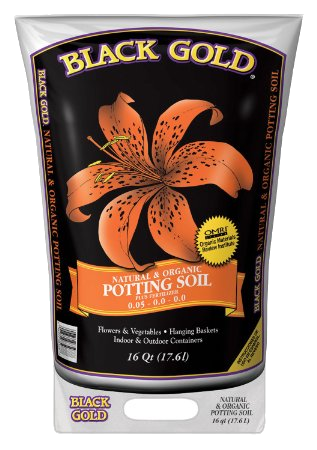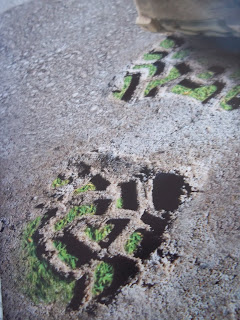Introduction
Fish farming is an ancient practice that can provide many profitable opportunities today. The raising and selling of fish on a commercial basis has proven to be economically successful throughout the United States. In Croatia, fish farming is growing in popularity. Increasing recognition that fish is a healthy food, low in calories and cholesterol levels, but rich in protein has increased consumer demand in both restaurants and supermarkets.Fish are excellent animals to rear. They can convert feed into body tissue more efficiently than most farm animals, transforming about 70 percent of their feed into flesh. Fish also have excellent dress-out qualities, providing an average of 60 percent body weight as marketable product and a greater proportion of edible, lean tissue than most livestock. Fish can be intensively cultured in relatively small amounts of water. In Virginia, they can be farmed at densities near 2,000 pounds/acre with careful management. Farm-reared fish offer a new alternative agricultural crop that can potentially replace those which are declining in popularity or profitability. Healthy farm-reared fish, guaranteed free of diseases, pesticides, and other harmful toxicants, are a more desirable substitute for wild fish from potentially polluted waters.
Fish farming is, like most other types of farming, a risky business that requires special knowledge, skills, and careful considerations. Some of the most important factors to consider in determining whether you should begin a fish farming business are listed below. Answering yes to all or most questions does not insure success. Similarly, answering no to all or most questions does not guarantee failure. Individuals with little or no experience in fish farming and few resources available can become successful fish farmers, but they should start small and expand slowly, and be willing to invest lots of time and effort.
Answer Yes or No
Economics:
1. Do you have sufficient financial resources available?
2. Do you own suitable land with a good source of high-quality water?
3. Do you own enough land and water necessary for a profitable venture?
4. Is there a high demand and sufficient market for your product?
5. Do you have the equipment and machinery necessary?
6. Is expected profit from fish farming greater than other land uses?
7. Can you really devote the money, time, and labor necessary?
8. Do you know the costs involved with the following items:
Capital CostsLand & buildings
Building ponds/raceways
Trucks & tractors
Plumbing & pipes
Tanks & aerators
Oxygen meters
Nets & boots
Operating CostsPurchasing eggs/fingerlings
Fish feed
Electricity & fuel
Labor & maintenance
Chemicals & drugs
Taxes & insurance
Telephone & transportation
Marketing:
l. Is there an established market for your fish?
2. Is the market demand sufficient year-round?
3. Do you have an alternative marketing strategy to rely on?
Physical:
l. Do you have a continuous source of clean, high-quality water?
2. Does your soil have enough clay content to hold water?
3. Is the water temperature optimal for the fish species reared?
4. Do you have space sufficient to build enough ponds or raceways?
5. Do you have good and easy pond access for feeding and harvesting?
6. Are the pipes sufficient in size for quick draining & easy filling?
7. Is your residence near enough for direct observation and security?
Production:
l. Have you had your water tested (chemical and bacteriological)?
2. Do you have a reliable source of fingerlings or eggs at affordable prices?
3. Do you have a reliable source of feed at reasonable cost?
4. Do you have dependable labor available at affordable wages?
5. How long is your growing season (days/year)?
6. Whats your production capacity (pounds/year)?
7. Whats the best fish species for you to grow?
8. Are you aware of fish reproductive biology and nutritional needs?
Legal:
l. Are you aware of the federal and state laws about fish farming?
2. Do you know where to apply for the necessary permits and licenses?
3. Are you familiar with the personal liability concerns involved?
Risk Assessment:
l. Can you afford to lose your entire fish crop?
2. Can you conduct water quality tests?
3. Is fish-disease diagnostic-help readily available?
4. Do you know about off-flavor and its causes?
5. Is pesticide, metal,or oil contamination possible?
6. Can you deal with poachers and vandals?
7. Do you know where to go for information and help?
Fish Farming Publications
Magazines/ NewslettersAquaculture Digest
9434 Kearney Mesa Rd.
San Diego, CA 92126
Monthly--$50/yr.
Aquaculture Magazine
P.O. Box 2329
Asheville, NC 28802
Bimonthly--$15/yr.
Aquafarm Letter
3400 Neyrey Drive
Metairie, LA 70002
Bi-weekly--$70/yr.
Arkansas Aquafarming
University of Arkansas
Cooperative Extension Service
Box 391
Little Rock, AR 72203
Quarterly--Free
California Aquaculture
University of California
Cooperative Extension Service
Aquaculture Extension
Davis, CA 95616
Monthly--Free
Canadian Aquaculture
4652 William Head Rd.
Victoria, British Columbia
Canada, V8X3W9
Quarterly--$14/yr.
Carolina Aquaculture News
P.O. Box 1294
Garner, NC 27529
Bimonthly--$12/yr.
Farm Pond Harvest
Professional Sportsman Pub.Co.
Box AA
Momence, Illinois 60954
Bimonthly-$10/yr.
Fish Farmer
Business Press International
205 E. 42nd St.
New York, NY 10017
Bimonthly-$56/yr.
Fish Farming International
Heighway House
87 Blackfriars Road
London SE 1814B England
Monthly--$35/yr.
Fish Farming International
110 Fleet St.
London EC4A England
For Fish Farmers
Mississippi State University
Cooperative Extension Service
Mississippi State, MS 39762
Monthly--Free
Georgia Fish Farmer
University of Georgia
Cooperative Extension Service
Athens, GA 30602
Quarterly--Free
Salmonid Magazine
U.S. Trout Farming Asso.
506 Ferry St.
Little Rock, AR 72203
Quarterly--Free
South Carolina Aquaculturist
Clemson University
Cooperative Extension Service
Room 102, Long Hall
Clemson, SC 29631
Quarterly--Free
Texas Aquaculture
Texas A&M University
Cooperative Extension Service
102 Nagle Hall
College Station, TX 77843
Quarterly--Free
The Catfish Journal
Catfish Farmers of America
P.O. Box 1700
Clinton, MS 39056
Monthly--$20/yr.
Timely Tips-Fisheries
University of Tennessee
Cooperative Extension Service
P.O. Box 1071
Knoxville, TN 37901-1071
Quarterly--Free
Water Farming Journal
3400 Neyrey Drive
Metairie, LA 70002
Monthly--$15/yr.
World Aquaculture News
P.O. Box 150129
Arlington, TX 76015
Monthly--$20/yr.
Journals/ Technical PublicationsAquaculture
American Elsevier Scientific Pub. Co.
52 Vanderbilt Ave.
New York, NY 10017
32 issues/yr.--$640/yr.
Aquaculture Engineering
Elsevier Applied Science
52 Vanderbilt Avenue
New York, NY 10017
Monthly--$132/yr.
Journal of Shellfish Research
National Shellfisheries Association
Oyster Biology Section
Gulf Coast Research Lab.
Ocean Springs, MS 39564
Journal of the World Aquaculture Society
178 Pleasant Hill
Louisiana State University
Baton Rouge, LA 70803
Progressive Fish Culturist
American Fisheries Society
5410 Grosvenor Lane, Suite 110
Bethesda, MD 20814-2199
Quarterly--$16/yr.
Transactions of the American Fisheries Society
American Fisheries Society
5410 Grosvenor Lane, Suite 110
Bethesda, MD 20814
Selected Fish Farming Books
- A Guide to Integrated Warm Water Aquaculture. D. Little and J. Muir. Institute of Aquaculture, University of Stirling, Stirling FK9 4LA, Scotland.
- Aquaculture Engineering. 1977. F.E. Wheaton. R.E. Krieger Publishing Company, Kreiger Dr., Malabar, FL 32950.
- Aquaculture: The farming and husbandry of freshwater and marine organisms. 1972. John Wiley & Sons, Inc. New York, NY.
- Cage Aquaculture. 1987. M. Beveridge. Unipub, 4611-F Assembly Drive, Landham, MD 20706-4391. Phone (301) 459-7666. ($38)
- Commercial Catfish Farming. 1973. Interstate Printers and Publishers. Danville, Il.
- Crustacean and Mollusk Aquaculture in the United States. J.V. Huner and E.E. Brown. AVI Publishing Co., Inc., 250 Post Road East, P.O. Box 831, Westport, CT 06881.
- Fish Farming Handbook. 1980. AVI Publishing Co., Inc., Westport, Ct. 06881.
- Fish Hatchery Management. 1986. American Fisheries Society, 5410 Grosvenor Lane, Suite 110, Bethesda, MD 20814.
- Guidelines for Striped Bass Culture. 1976. American Fisheries Society, 5410 Grosvenor Lane, Suite 110, Bethesda, MD 20814-2199.
- Principles and Practices of Pond Aquaculture. 1986. American Fisheries Society, 5410 Grosvenor Lane, Suite 110, Bethesda, MD 20814-2199, Phone (301) 897-8616. ($39.95)
- Principles of Warmwater Aquaculture. 1979. John Wiley & Sons, Inc. New York, NY.
- Principles of Warmwater Aquaculture. 1979. American Fisheries Society, 5410 Grosvenor Lane, Suite 110, Bethesda, MD 20814-2199. Phone (301) 897-8616 ($39.95)
- Recent Advances in Aquaculture. J. Muir and R. Roberts. Westview Press Inc., 5500 Central Ave., Boulder, CO 80301.
- The Aquaculture of Striped Bass. 1984. Maryland Sea Grant Program, 1224 Patterson Hall, Univ. of Maryland, College Park, MD 20742.
- Trout and Salmon Culture (Hatchery Methods). 1980. California Fish Bulletin Number 164. University of California, Berkeley, CA 94720.
- Trout Farming Handbook. 1973. Scholtum International Inc. Flushing, NY.
- Water Quality in Warmwater Fish Ponds. 1984. C.E. Boyd. Auburn University, Auburn, AL 36830. ($8)
Organizations
American Fisheries Society
5410 Grosvenor Lane
Suite 110
Bethesda, MD 20814-2199
301-897-8616
Catfish Farmers of America
P.O. Box 36
Jackson, MS 39205
601-353-7916
National Ornamental Goldfish Growers Asso.
6916 Blacks Mill Rd.
Thurmont, MD 21788
301-272-7475
National Shellfisheries Association
Edwin Thodes
National Marine Fisheries Service
212 Rogers Ave.
Milford CT 06460
203-783-4200
Shellfish Institute of North America
National Fisheries Institute
2000 M Street, NW, Suite 580
Washington, DC 20036
202-296-5170
U.S. Trout Farmers Association
515 Rock Street
Little Rock, AR 72202
501-372-3595
World Aquaculture Society
341 Pleasant Hall
Baton Rouge, LA 70803
504-388-3137
CCRES AQUAPONICS special thanks to Michelle Davis, Research Associate, Fisheries and Wildlife 













 Coriander is also called Dhania in India and Cilantro in some countries. It has a pungent and slight citrous taste to its leaves which adds to our taste buds. Coriander like some other vegetables discussed in the earlier blog are easy to grow. You can grow them in the garden as well as in the containers. Most of us like the flavor of coriander leaves though I know some persons who finds it very unpalatable.
Coriander is also called Dhania in India and Cilantro in some countries. It has a pungent and slight citrous taste to its leaves which adds to our taste buds. Coriander like some other vegetables discussed in the earlier blog are easy to grow. You can grow them in the garden as well as in the containers. Most of us like the flavor of coriander leaves though I know some persons who finds it very unpalatable. 








+(5).JPG)